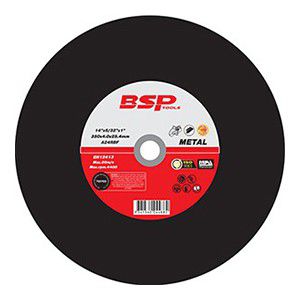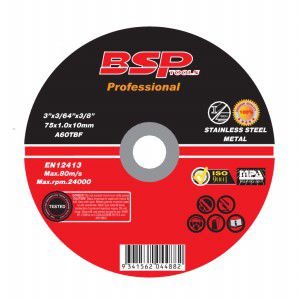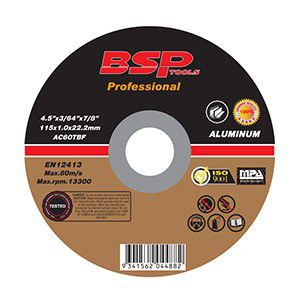
Aluminum cutting disc A24S-BFfor steelfor stainless steelsteel

Add to favorites
Compare this product
Characteristics
- Material to be cut
- for steel, for stainless steel, for aluminum
- Disc material
- steel
- Other characteristics
- high-speed, large-diameter
- Disc diameter
300 mm, 350 mm, 400 mm
(11.8 in, 13.8 in, 15.7 in)- Bore diameter
22.23 mm, 25.4 mm
(0.88 in, 1 in)
Description
Binic Abrasive produce large cutting wheel for customer are the largest cutting disc currently. These double reinforced 14 inch chop saw discs are built for general purpose metal cutting. This large 14″ cutting wheel can be used to cut a variety of metals and some common uses include cutting angle iron, square box, rectangle box, tubing and rebar. Black Hawks 14 inch chop cut off wheel is for use on a stationary chop saw. As with cut off wheels you will find that each disc provides quick cutting, as well as long life. Each disc is double reinforced for safety and durability even during the toughest jobs.
Features:
It is used for fixed cutting machines. With the 3.5mm thickness, it offer users more durability. And it is suitable for most demanding customers.
It maximizes the friction and sharpness and reduces the burrs after cutting.
Maximize the friction to improve sharpness, More cost saving than cutting by alloy blade.
It has various cutting applications, increasing side strength to guarantee safety.
It has perfect abrasive performance and extra durability in its application of steel.
Product Advantages:
Super-long durability
High-speed cutting
Great value
No need to change the wheels even for different material’s cutting.
Superior durability and ultrahigh cutting speed.
High break-resistance and comfortable cutting experience.
Cut smoothly without any block.
Catalogs
No catalogs are available for this product.
See all of binic‘s catalogsRelated Searches
- Cut-off disc
- Metal cut-off wheel
- Thin cutting disc
- Steel cut-off wheel
- Steel cutting disc
- Stainless steel cut-off wheel
- Concrete cutting disc
- Aluminum oxide cut-off wheel
- Manual grinder cut-off wheel
- Stone cut-off wheel
- High-speed cutting disc
- Aluminum cutting disc
- Resin cut-off disc
- Metal cutting disc
- Large-diameter cutting disc
- Silicon carbide cut-off wheel
*Prices are pre-tax. They exclude delivery charges and customs duties and do not include additional charges for installation or activation options. Prices are indicative only and may vary by country, with changes to the cost of raw materials and exchange rates.








